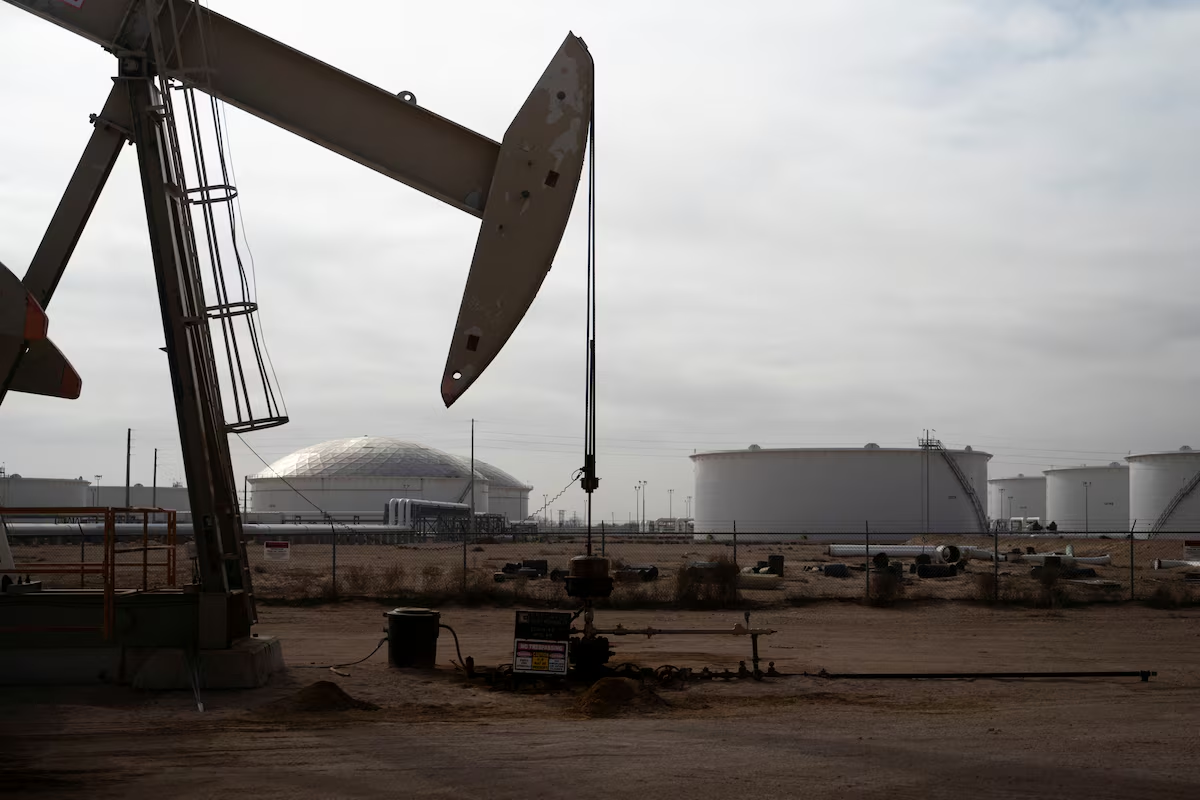Oil prices have taken a dip once again, reflecting the shifting dynamics in global energy markets. Oil prices are being influenced by a combination of seasonal demand changes in the U.S., new tariff pressures on India for importing Russian crude, and ongoing geopolitical risks between Russia and Ukraine.
Oil Prices Slip Amid U.S. Demand Outlook
On Thursday, Brent crude futures slipped by 31 cents (0.46%) to $67.74 per barrel, while West Texas Intermediate (WTI) crude fell by 36 cents (0.56%) to $63.79 per barrel. This comes after both benchmarks rose by more than 1% in the previous session.
The U.S. Energy Information Administration (EIA) reported that crude inventories dropped by 2.4 million barrels in the week ending August 22, exceeding analysts’ expectations of a 1.9 million-barrel draw. This decline indicates stronger demand in the run-up to the Labor Day holiday weekend, which traditionally marks one of the busiest travel periods in the U.S. However, with Labor Day also signaling the end of the summer driving season, analysts caution that demand for fuel is expected to taper off in the coming weeks.
Technical Outlook on Oil Prices
Analysts suggest that oil prices are likely to face strong resistance at the $64-$65 range, with potential support levels near $60. Tony Sycamore, a market analyst at IG, highlighted that while the latest inventory draw is supportive of prices, the shift into the post-summer season typically brings a slowdown in gasoline demand, putting downward pressure on crude benchmarks.
U.S. Tariffs on India and the Russian Oil Factor
One of the major global developments affecting oil prices is the decision by the United States to double tariffs on Indian imports, raising them as high as 50%. The move comes in response to India’s continued purchase of Russian crude despite Western sanctions.
India, the world’s third-largest oil consumer, has been a key buyer of discounted Russian crude since the outbreak of the Russia-Ukraine war. Market experts expect India to maintain its Russian oil imports in the short term despite tariff hikes, which should soften the potential supply shock to global markets. Still, traders are closely watching New Delhi’s next steps, as any significant reduction in Indian purchases could tighten supplies and influence price volatility.
Russia-Ukraine Conflict Adds Supply Concerns
Another factor underpinning oil prices is the continued escalation in the Russia-Ukraine conflict. In the past week, Russia launched drone attacks on Ukraine’s energy and gas transport infrastructure across six regions, leaving over 100,000 households without power. Such disruptions highlight the vulnerability of energy infrastructure in the region and add a layer of supply-side uncertainty to global crude markets.
While these attacks have not yet directly impacted crude exports, they contribute to the overall risk premium in the market, preventing prices from falling further despite weakening U.S. demand outlooks.
Interest Rate Policy and Oil Prices
Monetary policy developments in the U.S. are also playing a key role in shaping the direction of oil prices. Investors are anticipating a potential interest rate cut by the Federal Reserve, which could boost economic activity and, by extension, oil demand.
John Williams, President of the New York Federal Reserve Bank, recently stated that while a rate cut is likely in the near term, policymakers will assess upcoming data before deciding at the September 16–17 Fed meeting. Should rates be lowered, it may provide short-term support to oil prices by spurring consumption and industrial growth.
Outlook for Global Oil Prices
Looking ahead, the trajectory of oil prices will depend on three critical factors:
- U.S. Demand Trends – With the end of the summer driving season, demand for gasoline and jet fuel is likely to decline. Inventory reports in the coming weeks will be closely watched.
- India’s Tariff Response – How New Delhi manages U.S. tariff hikes while balancing its energy needs will be crucial for global supply chains. Continued imports of Russian oil could stabilize prices, while reductions may trigger volatility.
- Geopolitical Risks – Escalating Russia-Ukraine tensions and attacks on energy infrastructure will keep markets on edge, ensuring a built-in risk premium in crude benchmarks.
The fall in oil prices highlights the complex interplay of supply, demand, and geopolitics that continue to define the global energy market. As the U.S. enters a lower-demand season, India faces tariff pressure, and Russia continues its assault on Ukraine’s energy assets, traders remain cautious about the road ahead. For now, oil prices are likely to remain range-bound, with resistance near $65 and support around $60, until clear signals emerge from both economic policy shifts and geopolitical developments.



